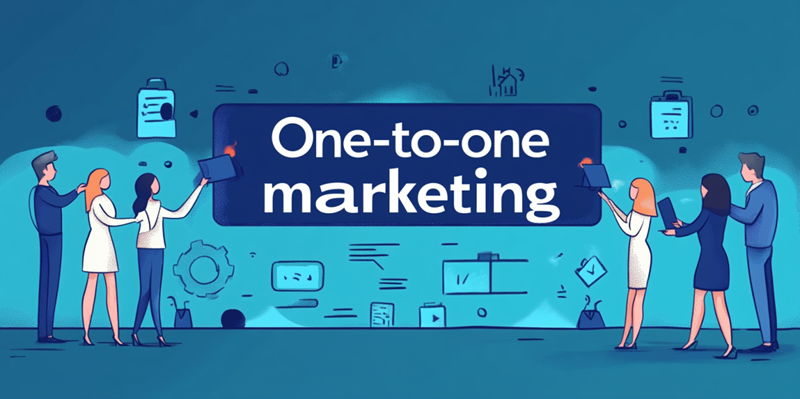In person, a great salesperson remembers a customer’s preferences and suggests new items that align with past purchases, creating a personalized and satisfying shopping experience. This level of personalization is highly valued by customers and can significantly boost their loyalty to a brand. According to recent reports, 60% of consumers make their purchasing decisions based solely on the service they expect to receive. As an ecommerce business owner, you may wonder how to replicate these warm, knowledgeable customer relationships online. One-to-one marketing aims to achieve this level of personalization at scale, helping you build lasting relationships with customers you may never meet face to face. By leveraging technology, you can make every shopper feel like a regular as they browse through your website.
Establish clear objectives
Setting specific goals is a crucial first step in developing an effective one-to-one marketing strategy. Clear and measurable objectives help shape your marketing efforts and provide a roadmap for success. For example, if your goal is customer acquisition, you might aim to increase the conversion rate of new customers by 15% through highly targeted, personalized campaigns. On the other hand, if your objective is customer retention, you could aim to boost customer lifetime value by 20% by creating marketing campaigns based on individual purchase histories and preferences.
These goals serve as the foundation of your personalized marketing strategy. They inform how you will interact with customers and which metrics you will use to measure success. By setting clear objectives, you ensure that your efforts are focused and aligned with your overall business goals. Furthermore, these objectives help you identify the resources and tools necessary to achieve them, making it easier to allocate budgets and track progress effectively.
Gather first-party data
To create highly personalized experiences, you need to collect first-party data directly from your customers. Third-party cookies have become less reliable due to privacy concerns and regulations like GDPR, making first-party data a more accurate and dependable alternative. This data can be gathered through various interactions with your brand, including website visits, purchase history, email engagement, and customer service interactions. By collecting and analyzing this data, you can gain valuable insights into customer behavior and preferences.
Building trust with your customers is essential when collecting their data. Prioritize transparency and consent by clearly communicating how you will use the information to enhance their experience. For example, Katherine Oyer, founder of the baby clothing brand Francis Henri, uses customer data to make informed business decisions. She expanded her ecommerce store to in-person selling by leveraging insights from online interactions and pop-up shops. This approach allowed her to refine her marketing strategy and product offerings based on real customer feedback.
Organize and categorize your data
Once you have collected first-party data, the next step is to organize it into comprehensive customer profiles. Use customer relationship management (CRM) systems or customer data platforms to consolidate data points such as purchase history, browsing behavior, and customer feedback. Creating holistic customer profiles allows you to better understand individual preferences and tailor your marketing efforts accordingly.
Sorting and segmenting your data helps identify patterns and preferences that inform your marketing decisions. For example, an outdoor gear store could use analytics tools to track a customer’s purchase history of hiking boots, tent browsing behavior, and feedback on camping equipment. This information allows the store to create targeted product recommendations and marketing campaigns that cater to the customer’s specific interests and needs. By organizing and categorizing your data, you ensure that your marketing efforts are aligned with customer preferences, leading to more relevant and effective interactions.
Engage with your customers across various channels
To create a cohesive customer experience, engage with your customers across multiple touchpoints. Start with a few key channels and gradually expand your reach as you refine your strategy. Personalized interactions on various channels help you build stronger relationships with your customers. Some key channels to consider include your website, email, SMS, social media advertising, and AI-powered chatbots.
Displaying dynamic content and personalized product recommendations on your homepage can make a significant impact. By tailoring these elements based on browsing history and past purchases, you create a more relevant and engaging shopping experience. Additionally, sending targeted messages via email and SMS with personalized offers, product updates, and cart abandonment reminders can help drive conversions. Social media advertising also plays a crucial role in one-to-one marketing. Use custom targeting and lookalike audiences to deliver highly relevant ads that reflect each customer’s interests and purchase intent. AI agents and chatbots can provide instant, personalized customer support and product recommendations based on real-time interactions, further enhancing the customer experience.
Refine and adjust based on feedback and outcomes
Regularly analyzing your one-to-one marketing efforts is crucial for identifying what’s effective and what needs improvement. If your personalized emails aren’t increasing open rates or click-throughs, try experimenting with different subject lines, content formats, or sending times. If sales aren’t meeting your expectations, consider revisiting your segmentation strategy and the relevance of your offers. Continuously refining your approach ensures your one-to-one marketing strategy remains efficient and aligns with customer preferences.
A/B testing various personalization tactics can help determine which strategies resonate most with your audience. By comparing different approaches, you can make data-driven decisions to optimize your marketing efforts. Continuously tweaking your strategy and staying ready to pivot when necessary allows you to remain agile and responsive to customer feedback. This helps maintain a high level of personalization and fosters ongoing growth for your ecommerce business.
To sum up, one-to-one marketing is a proven strategy for driving growth in ecommerce businesses. By setting clear goals, collecting first-party data, organizing it effectively, engaging customers across multiple channels, and refining your approach based on feedback and results, you can create highly personalized experiences. This fosters long-term customer loyalty. As technological advances make personalized marketing more accessible, businesses of all sizes can adopt these strategies to unlock their customer base’s full potential and drive significant revenue growth.

